
Chaptalia texana & C. carduacea Phyllaries
by Bob Harms




Phyllaries provide the most striking evidence distinguishing these two species. Although we find considerable overlap in length of the longest (innermost) phyllaries (C. carduacea 15–20 mm long (avg. 17.7 mm) vs. C. texana 12.3–17.5 mm long (avg. 15 mm), the two are otherwise quite distinct. The exposed margins and midribs of C. carduacea phyllaries are dark crimson and stand in sharp contrast with the light tomentose vestiture in between, as can be seen in the images below. Specimens of C. texana with similar coloration were noted, but the absence of this contrast would seem to exclude C. carduacea.
The main distinguishing features are:
| C. carduacea | C. texana |
|---|---|
| subulate & subulate–linear | linear lanceolate |
| stiff by virtue of a thick midrib which continues to the tip (ca. 0.23 mm thick 3 mm from the tip) | tips acute and flexible (ca. 0.1 mm 3 mm from the tip) |
| innermost phyllaries 15–20 mm long (avg. 17.7 mm), of two widths, ± 1.1 mm & ± 1.8 mm | innermost phyllaries 12.3–17.5 mm long (avg. 15 mm), of uniform width, ± 1 mm |
| outer phyllaries commonly greater than 1.5 mm wide | outer phyllaries not exceeding 1.5 mm |
| clearly imbricate | subimbricate |
| Click for larger image | |
|---|---|
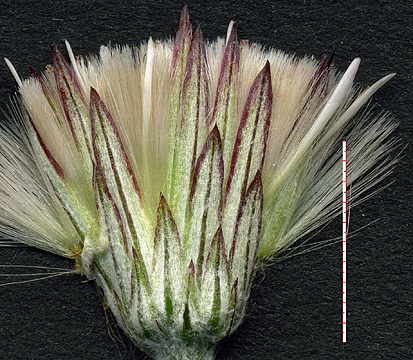 | 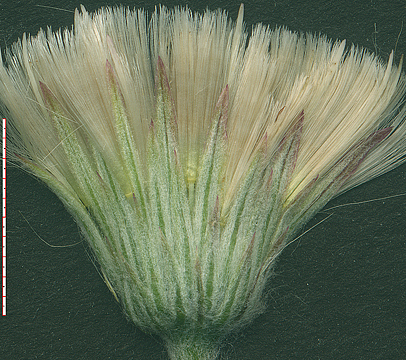 |
| C. carduacea | C. texana |
| Click for larger image | |
|---|---|
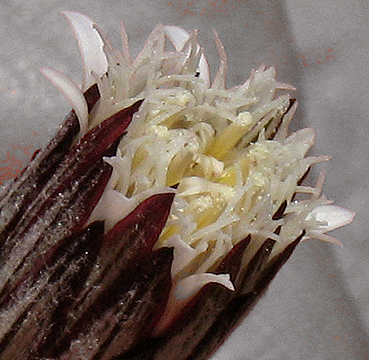 |
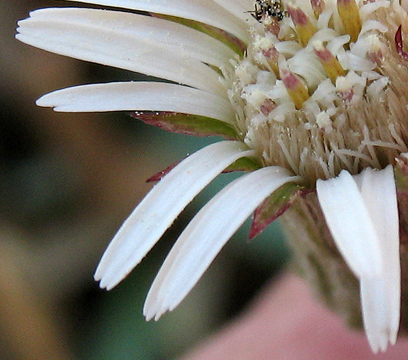 |
| C. carduacea | C. texana |
| Click for larger image | |
|---|---|
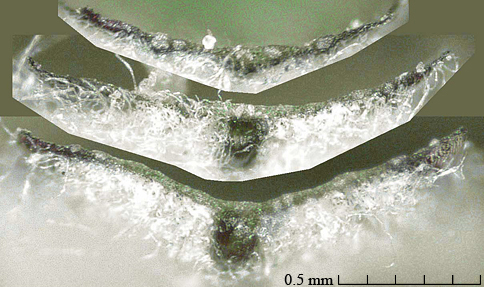
|
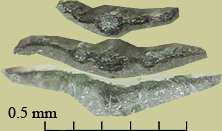 |
| C. carduacea | C. texana |

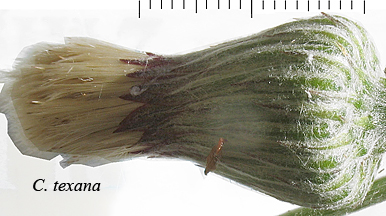
And C. texana heads are frequently twisted:
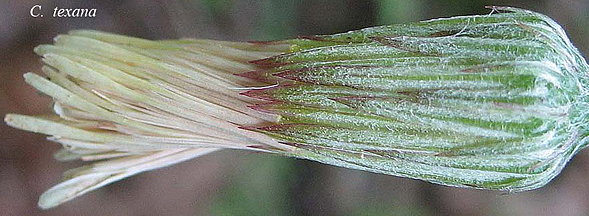
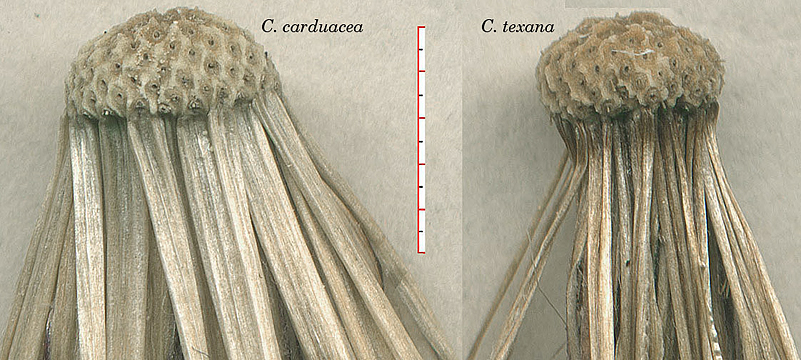
| Click for larger image | |
|---|---|
 |
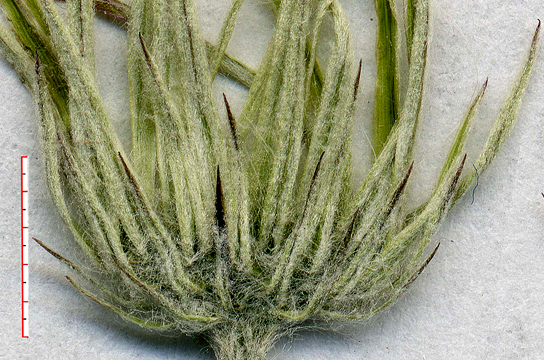 |
| C. carduacea | C. texana |
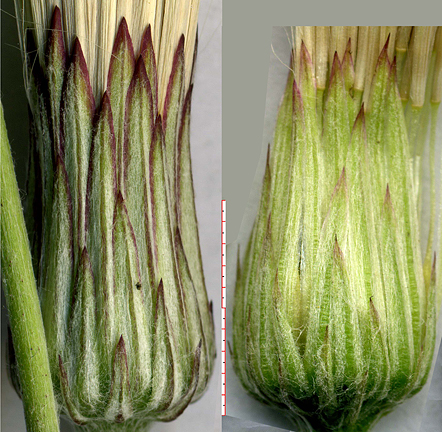
“bracts subulate and subulate-linear, hard and rigid, pungently acute, tomentose”Greene's C. leonina (presented in the same 1906 article) is regarded here as synonymous with C. carduacea (earlier both were seen as synonymous with C. texana). He says:
“bracts of the involucre broad and much imbricated, tomentose except as to the purple margins and tips, the latter pungently acute ... in aspect more like the Texan C. carduacea than any other.”The images below were scanned from type specimens of the U. S. Herbarium.